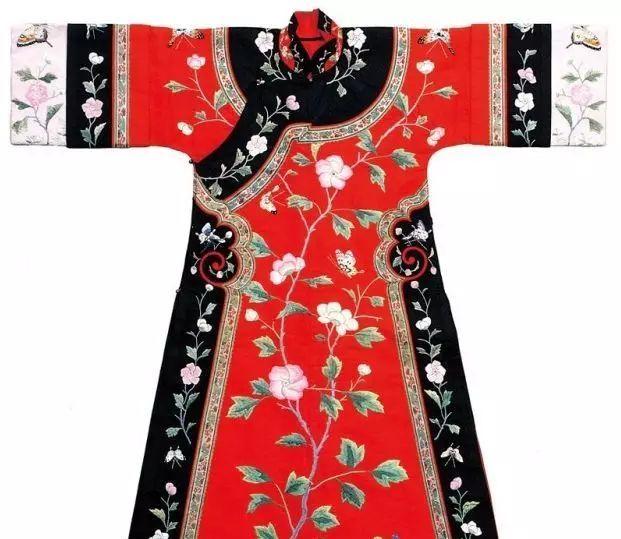Manchu cheongsam

The qipao is a garment that Manchu men and women, young and old, and is called "Yijie" in Manchu, because it is the regular dress of the qi people, so it is called "qipao". Its style and structure are relatively simple, with round neckline, large placket, narrow sleeves, left side, tunic belt, buckle, and slits on all sides of the hem.
During the Qing Dynasty, the Qipao worn by Manchu men in SuiyuanCheng, Inner Mongolia, was long to the foot, the hem was fat, the four sides were slit, narrow sleeves and a corset, and its biggest advantage was that it was suitable for riding and shooting on horseback. The narrow cuffs are generally added with a semi-circular sleeve, in order to protect the back of the hand in winter to facilitate archery, so it is called "arrow sleeve". Because of its shape like a horseshoe, it is also known as "horseshoe sleeve".
Depending on the season, the cheongsam has leather, cotton, single, clip, yarn and other materials. In the Qing Dynasty, the slit cheongsam was expensive, and most of them were official clothes and dress styles. The cheongsam is a regular dress, generally a daily dress for flag bearers. Men's cheongsam wears more elaborate ornaments, and common objects include purses, knives, fire sickles, fan covers, spoons, spoons, toothpicks and other items.
During the Qing Dynasty, the Manchu peasant families in Inner Mongolia were deeply influenced by the Han costumes due to the long-term mixing with the Mongolian and Han ethnic groups, and the narrow-sleeved robes were not suitable for farmland cultivation, so the narrow sleeves became trumpet sleeves. The four-sided slit of the robe evolved into a left and right slit or a slit, and it was beautiful for its fatness. During the Qing Dynasty, the Qipao of Manchu men in Suiyuan City was the most typical in Inner Mongolia.
During the Qing Dynasty, Manchu women also mainly used robes, the style was upright wide-sleeved robes, and there were several patterns inlaid at the neckline, cuffs, plackets, etc.
The women's qipao of the early Qing Dynasty has the characteristics of simplicity and practicality, the external contour is rectangular straight, with a round neckline, narrow sleeves, buckles, and a left placket. The armpits are visibly constricted, the lower part of the robe is slit, and the hem is wide. The robe hangs down to the ankles and is cut from top to bottom by pieces of clothing. The collar and cuffs are narrower and the color is more plain.
In the middle of the Qing Dynasty, the style of women's robes changed, the robe body and sleeves were wider than in the early Qing Dynasty, and in addition to the traditional round neck, a narrow standing collar appeared.
At the end of the Qing Dynasty, the style of the qipao was a relatively wide robe body, fat sleeves over the elbow, buckled right side, hem slit, straight and hard shape, the shape was mainly straight, the contraction of the two armpits was not obvious, and the high neck was used, and the neck height and cheeks could touch the earlobes. The robe is embroidered with various colors, and the collar, sleeves, placket, and hem are decorated with multiple wide piping, up to "eighteen inlaid rolls".
This emphasis on rolling decoration was a major feature of Manchu women's clothing at the end of the Qing Dynasty. In front of the placket are hung ornaments made of gold or silver, such as ear diggers, tweezers, toothpicks, etc., and some also hang small sachets and purses containing spices. During the Qing Dynasty, inner Mongolia was particularly typical of the qipao of the Manchu women of Suiyuan City and the Ten Manchu Townships of Qaraqin Banner.
During the Republic of China, the men's qipao was still a straight-barrel wide-sleeved robe with water sleeves, and the hem of the robe reached the ankles and had no ornamentation. In the 1950s, due to the influence of Manchu social changes and new clothing, men's qipao was gradually abandoned. After the Xinhai Revolution, the Manchu women's qipao was changed to a style with loose chest, slightly tight waist, slightly wider hips, and slightly retracted hem. The overall style is one and the other, with curved and smooth lines. The cheongsam can show the dignity and elegance of women and the beauty of the body, and is one of the representatives of traditional women's clothing in China.
............................
Source: Fang Zhi Inner Mongolia